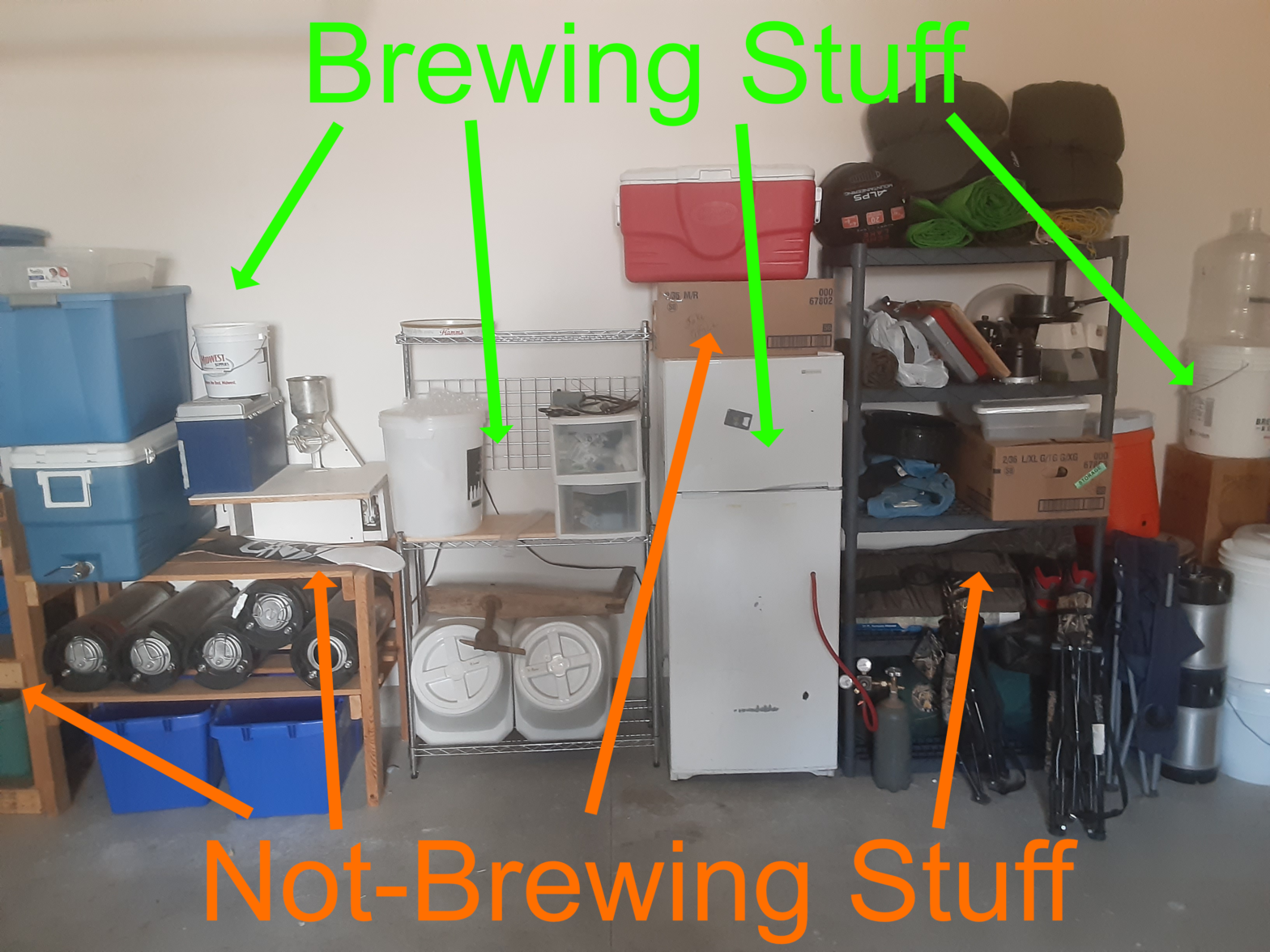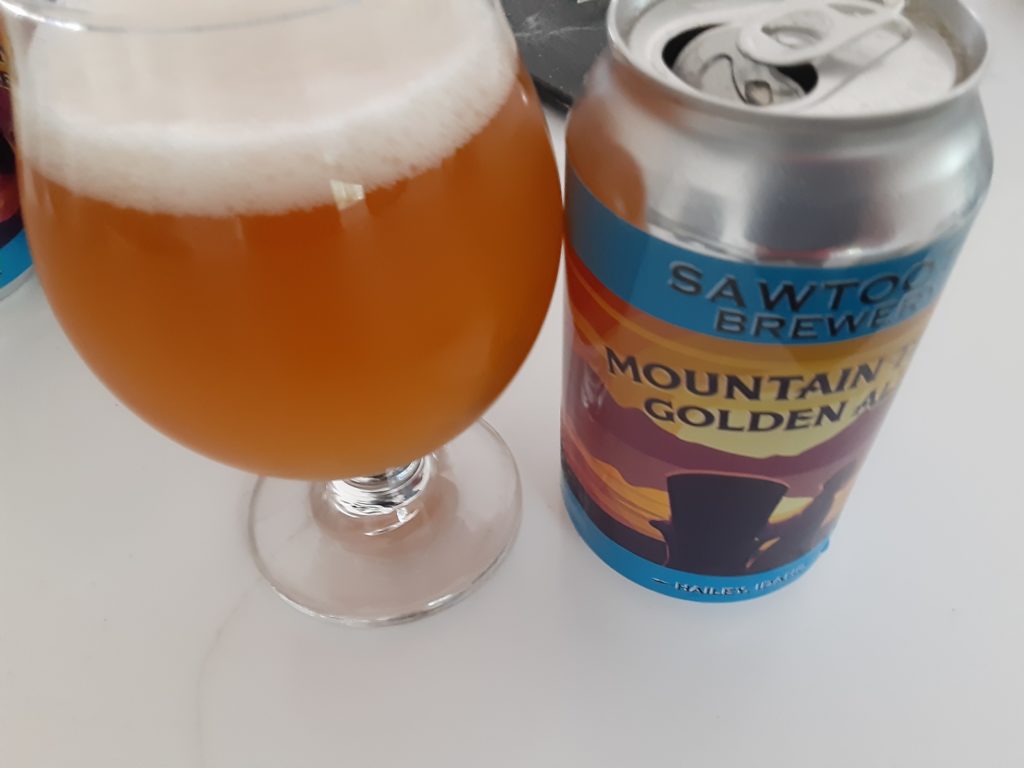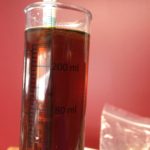After a cross-country move, family emergencies, and starting to get things organized, I’m finally returning my attention homebrewing. OK, my attention has been focused on homebrewing in general, but I can actually see making time to actually brew some beer in the near future.
First, though, I need to fix some problems, reassemble some gear, and re-stock some supplies.
Fixing Problems
I have a few things that need to be fixed. Not many things are broken, but my brewery is definitely not set up to work properly at the moment.
Physical Fix
My chiller burst. During a frigid Wisconsin winter, I didn’t properly drain my immersion chiller, so it burst. The video above is my misadventure(s) getting it fixed. From expanded copper tubing to changing fittings, I eventually got it fixed.
Logical Fix
The layout of my equipment needs to get fixed. When I was unpacking the stuff for our garage, I tried to group my brewing stuff together. But I didn’t know how much space we were going to have. I wound up putting some stuff over here, over there and the rest of it in the opposite corner. And quite a bit of it got mixed with non-brewing items.
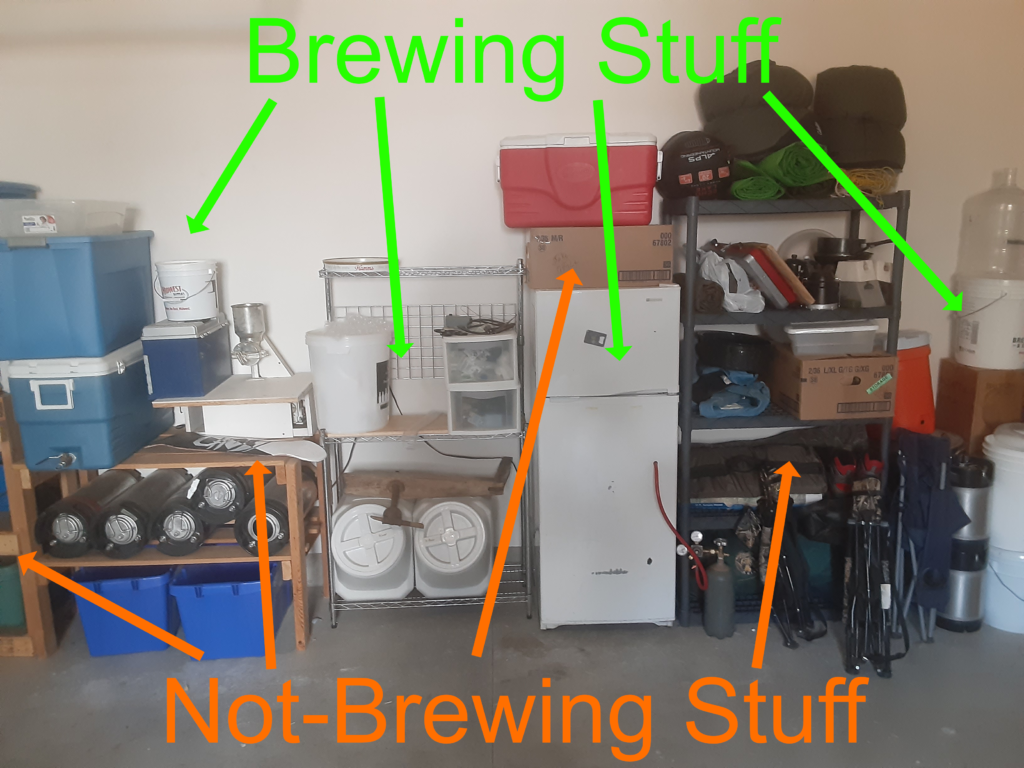
The above picture is one side of my garage. You can’t tell, but this side of the garage is where most of my brewing equipment and supplies are stored. Which is great . . . but it’s not consolidated as much as I would like. There’s also a lot of non-brewing gear mixed in: recycling bins, camping gear, a shelf we used to have gardening tools on, etc.
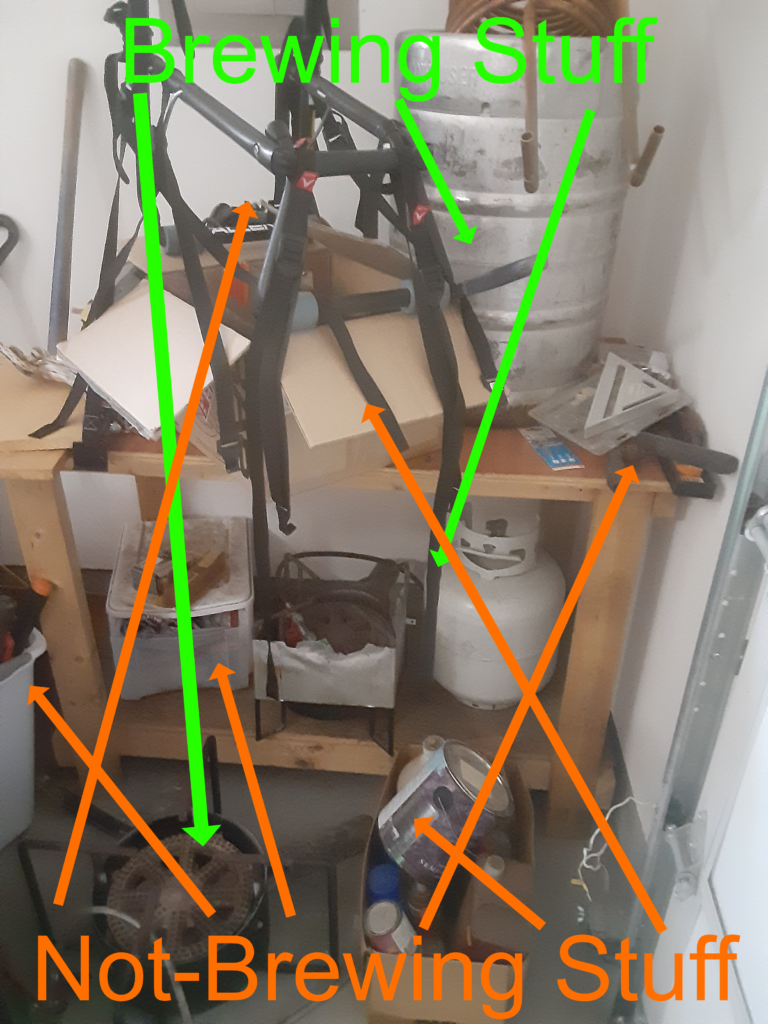
This picture is of the bench I’ll actually be using as my brew structure. It’s about the correct height, and is small enough I should be able move it around on my own, once I add wheels on one end . . . and move it closer to where I plan to brew . . . and get the chemicals, fuel, and woodworking supplies off of it.
Reassembling Gear
Mash Tuns
I had to disassemble both of my mash tuns for the move. They both had to be packed with items to maximize space usage, and the ball valves had to be removed. The manifold and false bottom used for sparging also had to be removed from both to prevent damage and maximize internal space.
Kettles
I have two kettles: one used for a hot liquor tank and a converted keg I use for my boil kettle. I had to remove the ball valves to prevent damage to the kettles and to items near the kettles in the moving van.
While packing, I also found the bazooka screen I had purchased but not installed in my kettle. That’s going to happen now.
Restocking Supplies
This will be an ongoing adventure. Some brew days involve tweaking the initial goal, forgoing a process, or changing the recipe based on what is available.
I know there are some things I need before I begin, however. I know I need sanitizer, I didn’t want my half-full bottle of Star-San to leak in the moving van so I gave it to a friend before our move.
I need tubing for transferring water from the HLT to the mash tun and draining wort from the mash into the kettle. Then I also need to either find my funnel or get some tubing for transferring from the kettle into my fermenter.
Making it Happen
Sometimes general clutter is a convenient excuse I use to use to prevent moving forward. We just picked up some shelving so I will be able to move items out of the way and organize all my brew gear on one side of the garage.
Watch for a post with an update of the new look! There will be some related videos about the reorganization, assemblies, and re-stocking efforts as well.
Brew up an adventure!
